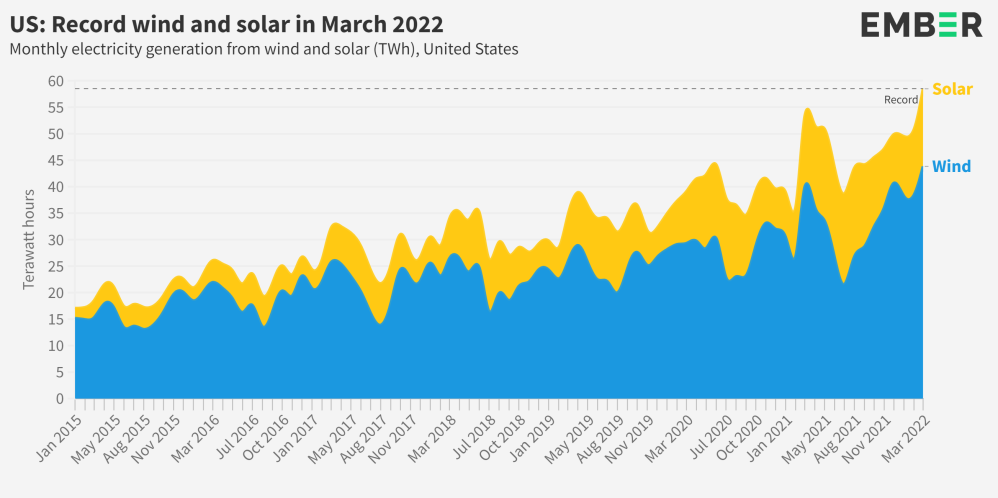
Last month, the US generated 18% of its electricity from wind and solar (59 TWh) for the first time. That beat the previous record set in March 2021 (53 TWh), according to new data from global energy think tank Ember.
UnderstandSolar is a free service that links you to top-rated solar installers in your region for personalized solar estimates. Tesla now offers price matching, so it’s important to shop for the best quotes. Click here to learn more and get your quotes. — *ad.
In 2015, the US generated just 5.7% of its electricity from wind and solar (229.8 TWh). By 2021, it had more than doubled that, reaching 13% of its electricity from wind and solar (543.5 TWh).

The trend reflects the global acceleration toward wind and solar energy, which have doubled since 2015 to deliver a record 10% of global electricity in 2021, according to Ember’s “Global Electricity Review.”
Wind and solar were the fastest-growing forms of electricity worldwide for the 17th year in a row in 2021 and are projected to be the backbone of the future electricity system.
Many European countries already produced more than 25% of their electricity from wind and solar in 2021, including Germany, Spain, and the UK, which is helping to rapidly reduce their reliance on imported fossil fuels from Russia and elsewhere.
The International Energy Agency states that in order to reach net zero, wind and solar need to reach 20% of global electricity by 2025 and 70% by 2050.
Ember’s COO, Phil MacDonald, said:
Wind and solar are breaking records around the world. The process that will reshape the existing energy system has begun. Wind and solar provide a solution to the ‘trilemma’ of achieving a sustainable, affordable, and secure energy supply. This decade they need to be deployed at lightning speed.
Read more: Here’s how a new US protectionist move is backfiring badly on the US solar industry
Subscribe to Electrek on YouTube for exclusive videos and subscribe to the podcast.
Author: Michelle Lewis
Source: Electrek



